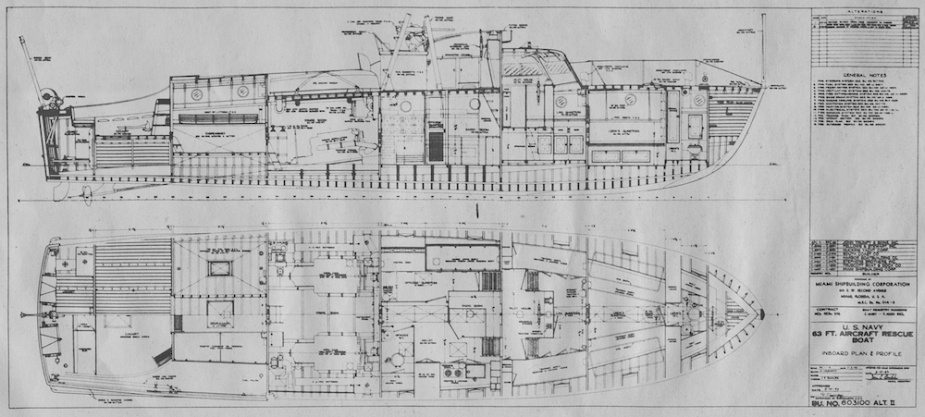HMAS Air Bird
| Class |
Air/Sea Search and Rescue Vessel |
|---|---|
| Pennant |
ASR915 |
| Builder |
Harbor Boat Building Co, USA |
| Commissioned |
28 March 1945 |
| Decommissioned |
30 September 1946 |
| Fate |
Transferred to the Royal Australian Air Force in 1949 |
| Dimensions & Displacement | |
| Displacement | 24 tons |
| Length | 63 feet (19.2 metres) |
| Beam | 15 feet (4.57 metres) |
| Draught | 3 feet 4 inches (1.01 metres) |
| Performance | |
| Speed | Up to 28 knots |
| Complement | |
| Crew | 7-8 including 2 RAAF telegraphists |
| Propulsion | |
| Machinery | Twin Hall-Scott petrol engines |
| Horsepower | 1200 bhp |
| Armament | |
| Guns | 2 x twin Lewis guns |
HMAS Air Bird was one of 21 air/sea rescue vessels originally built in the USA and Canada between 1943 and 1945, and transferred to the RAN under the Lend-Lease Agreement. These vessels were originally designed as anti-submarine craft but their high speed and manoeuvrability made them ideal as search and rescue vessels. In this role, their hulls were painted black and their upper decks and superstructure painted bright yellow. One vessel, HMAS Air Sprite, was built locally in 1960 to an almost identical design.
Air Bird was commissioned on 28 March 1945 in Sydney under the command of Sub Lieutenant Douglas Farquhar, RANVR, and officially listed as a tender to HMAS Rushcutter, and later to HMAS Madang. Her first few weeks of commission were spent at Garden Island in Sydney preparing for sea and conducting trials. She departed Sydney on 14 July bound for Madang, New Guinea, where she arrived on 31 August.
Following the Japanese surrender on 15 August, Air Bird remained on standby for search and rescue duties in New Guinea waters. She suffered some minor damage in inclement weather at Aitape in September, and in November embarked a RAAF investigation team which was endeavouring to discover the fate of missing RAAF aircrew. On five occasions in November and December, operating primarily in the Wewak area, she went to the assistance of overturned sailing vessels.
She returned to the Madang area in February 1946. That May Air Bird suffered from engine defects which resulted in a marked loss of power and fumes escaping into the engine room. The decision was made to return the boat to Australia where she decommissioned at Brisbane on 30 September 1946. She was transferred to the RAAF in 1949.



